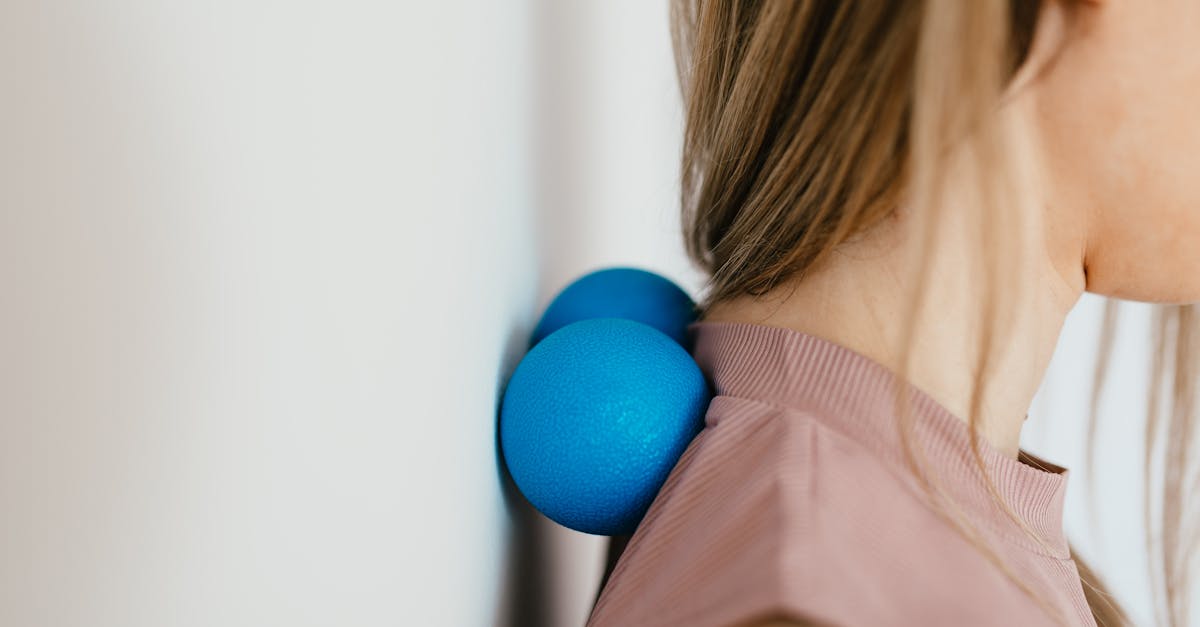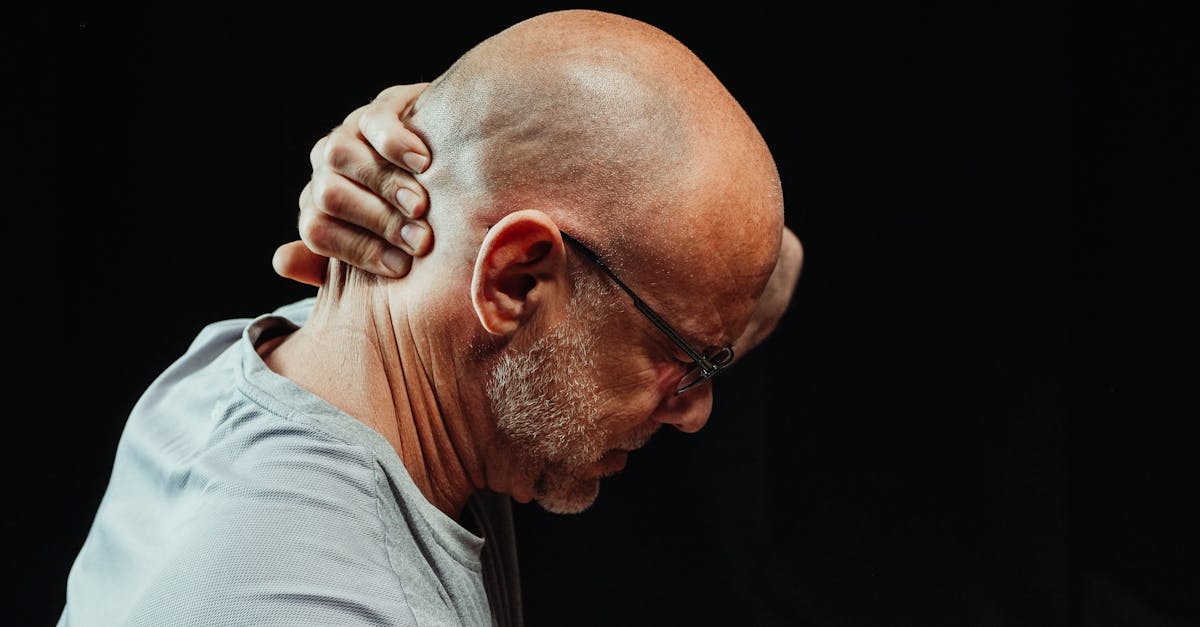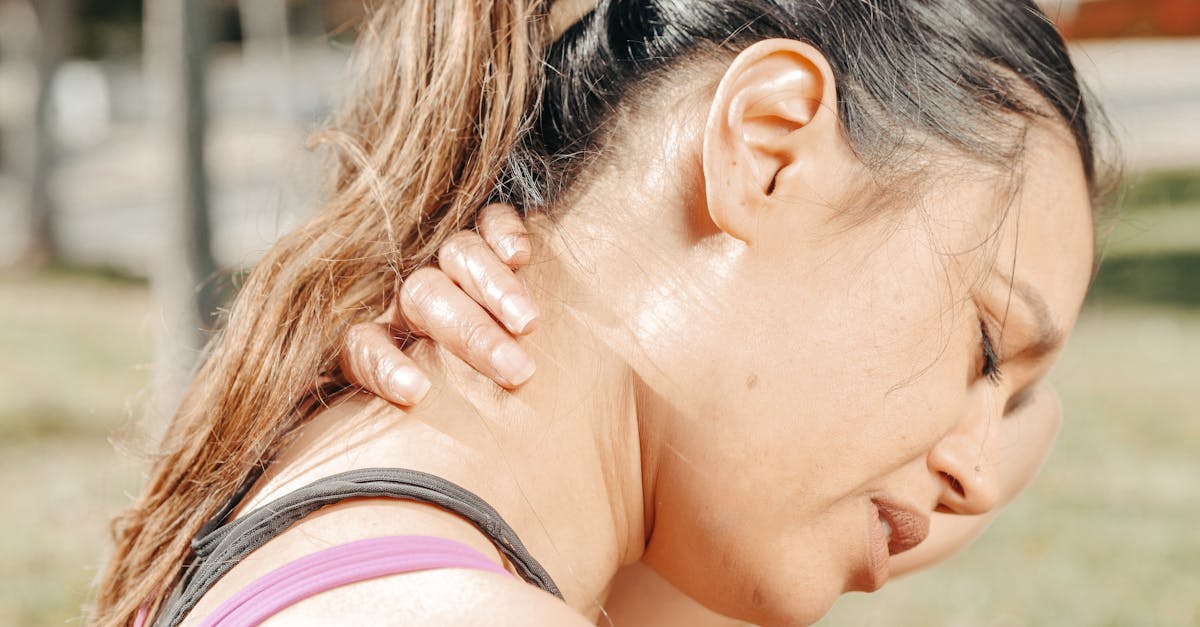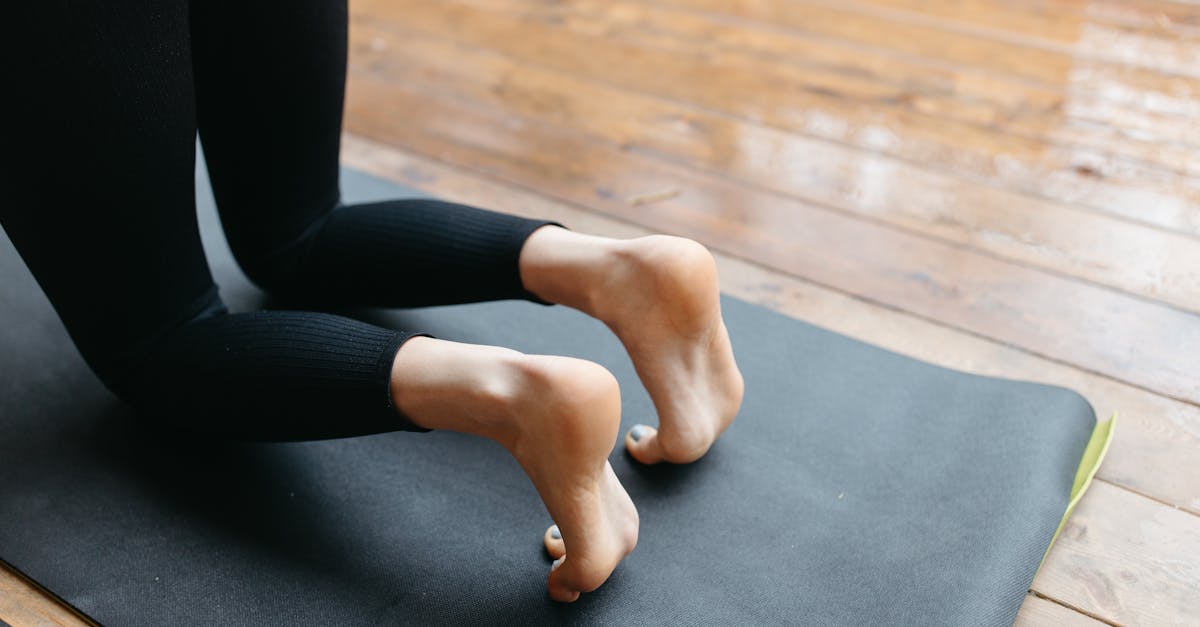|
In Short, understanding the surge of neck pain during winter months revolves around recognizing its causes and implementing effective relief strategies. The cold weather often triggers muscle constriction, leads to reduced mobility, and increases the likelihood of dehydration, all contributing to heightened discomfort. By identifying these factors, individuals can manage their symptoms through hydration, posture corrections, and light exercise. Addressing these components not only restores comfort but also facilitates mobility during the colder seasons. |
Understanding the Surge of Neck Pain During Winter Months: As temperatures drop, neck pain becomes increasingly prevalent due to various contributing factors. Cold weather can cause muscle constriction, leading to increased tension and discomfort in the neck region. Additionally, the likelihood of illness, such as colds and flu, can exacerbate pain by causing muscle aches and insufficient mobility. Poor posture habits adopted during indoor activities, combined with dehydration from reduced water intake, further aggravate neck discomfort. To mitigate these issues, individuals are encouraged to stay active, maintain proper hydration, and practice good posture during the colder months.

At Pulse Align, we believe that achieving optimal well-being should be a simple, accessible journey for everyone. Our innovative, non-invasive method uses gentle, imperceptible pulses designed to help your body restore its natural balance and posture. This approach supports the intrinsic ability of your body to recalibrate itself, leading to reduced muscle and joint tension, and promotes an enhanced sense of well-being.
The Pulse Align Method
Pulse Align does not directly focus on addressing discomfort or conditions. Instead, our profound commitment lies in promoting muscle tone symmetry and improved posture, which can naturally lead to an increased sense of comfort. Our holistic approach empowers the body, providing a pathway for self-correction and overall balance without the need for invasive measures.
Personalized Client Experiences
Every client’s journey with Pulse Align is unique. Testimonials reflect the positive impact our services have had on the well-being of individuals seeking relief from tension and discomfort. Many clients have shared inspiring stories about how they have experienced notable improvements in their comfort, postural balance, and overall vitality. The encouraging feedback highlights our dedication to providing a nurturing environment that supports the journey of each individual and their family towards enhanced wellness.
Join Us on Your Wellness Journey
We invite you to explore everything that Pulse Align offers. Visit our website to learn more, find a clinic near you, and book a consultation for yourself or your family. Locations such as La Prairie, Mont-Royal, and Terrebonne are ready to welcome you with a safe, non-invasive, and family-friendly approach. Keep in mind that while our services complement your wellness efforts, consistent supervision from your healthcare team remains essential.
Medical Disclaimer
The information provided on this site does not replace the advice, diagnosis, or treatment of a healthcare professional. Please remember that Pulse Align complements, but does not replace, medical care. For any medical concerns, always consult your healthcare team.
- Muscle Constriction: Cold temperatures lead to increased tightness, causing discomfort.
- Reduced Mobility: Sedentary behavior during winter limits movement, exacerbating pain.
- Hydration Issues: Decreased water intake leads to muscle stiffness in the neck area.
- Postural Strain: Poor posture from bundling up can intensify neck tension.
- Illness Impact: Colds and flu increase neck pain due to stress on the body.
- Cold Drafts: Exposure to cold air can trigger painful muscle spasms.

The winter season often brings a surge in neck pain, which can be attributed to several interrelated factors. Cold temperatures lead to muscle constriction, decreased mobility, and issues linked to hydration. Additionally, poor posture and seasonal illnesses can exacerbate existing conditions, making it crucial for individuals to recognize these challenges and employ effective management strategies. By understanding the root causes, one can take proactive measures to alleviate discomfort during these colder months.
Cold Weather Impacts on Neck Health
As temperatures drop, our bodies instinctively react by tightening muscles to conserve heat. This muscle contraction can lead to increased tension and discomfort in the neck region. The cold also reduces blood flow, depriving neck muscles of essential nutrients and oxygen, which further aggravates pre-existing pain. Individuals may find themselves experiencing heightened symptoms of discomfort due to these physiological changes triggered by winter weather.
Decreased Mobility
The colder months often discourage outdoor activities, resulting in a more sedentary lifestyle. When we decrease our physical activity, we risk developing joint stiffness and muscle tightness, both of which can contribute to neck pain. Particularly during winter, incorporating light exercises and stretching routines is vital to maintain mobility and flexibility, helping to mitigate the effects of inactivity.
Posture Dilemmas in Winter
With colder weather often compelling individuals to bundle up in layers, poor posture can easily follow. {During winter, people tend to hunch or adopt awkward sitting positions to stay warm, significantly straining neck muscles. Maintaining ergonomic postures during indoor activities is crucial to prevent worsening discomfort; utilizing supportive furniture can help promote a healthier spinal alignment, ultimately reducing neck strain.
Illness and Neck Pain Intensification
Winter months frequently coincide with a spike in illnesses such as the common cold and flu. These ailments can often come with generalized muscle aches that intensify neck pain. Being mindful of how such illnesses impact body posture and tension can make a noticeable difference in managing discomfort. Taking necessary precautions and maintaining a strong immune system can be beneficial in lessening neck pain associated with seasonal illnesses.
The Role of Hydration in Neck Health
Interestingly, many people neglect to maintain proper hydration during winter. The dry air can make us forget about drinking enough fluids, leading to dehydration, which in turn contributes to muscle stiffness. Staying adequately hydrated supports overall health and can help prevent discomfort in the neck region. Making a conscious effort to drink sufficient water daily is an often overlooked preventive measure that can offer relief.
Strategies for Managing Neck Pain
A proactive approach to managing neck pain during winter includes several strategies. Firstly, fostering good posture by maintaining an ergonomic workspace is paramount. Secondly, engaging in regular stretching exercises ensures that neck muscles remain flexibly and healthy. Lastly, employing heat therapy, such as warm compresses, can provide immediate relief from tight muscle discomfort resulting from cold exposure. By integrating these practices into daily routines, individuals can effectively alleviate winter-related neck pain.
Recognizing the multifaceted nature of neck pain during winter emphasizes the need for an approach aligned with the principles of Pulse Align. Focusing on neuromuscular health, achieving symmetry, and recalibrating the nervous system can create an environment conducive to recovery. By embracing holistic practices, individuals can foster their well-being and reclaim their freedom of movement, ensuring a more comfortable and vibrant lifestyle even in the colder months.
| Factor | Impact on Wellness |
|---|---|
| Cold Weather | Promotes muscle contraction, leading to tension in the neck. |
| Decreased Activity | Leads to joint stiffness and reduced mobility; staying active enhances balance. |
| Hydration Levels | Proper hydration improves muscle elasticity, supporting overall comfort. |
| Posture Changes | Maintaining good posture can alleviate tension; focus on alignment. |
| Winter Sports | Increased physical activity should be paired with stretches to maintain flexibility. |
| Indoor Activities | Encourage ergonomic setups to support natural body alignment and avoid strain. |
| Illness Season | Illness may lead to irritability; practicing relaxation techniques can restore calm. |
| Sleep Quality | Ensure a comfortable sleep environment to promote restorative sleep and muscle recovery. |
| Temperature Fluctuations | Regular exposure to extreme temperatures may lead to muscle spasms, emphasizing the need for warmth. |
| Emotional Stress | Addressing stress through mindfulness and relaxation can positively affect muscle tension levels. |

Transformative Wellness Journey: Client Experiences with Neck Pain Relief
Throughout the winter months, clients have shared remarkable stories of their journeys towards healing and wellness at Pulse Align. Many individuals experiencing neck pain have reported significant improvements in their overall well-being, attributing such transformations to the unique, holistic approach our clinic employs. Our commitment to supporting the body’s natural ability to recalibrate and restore balance has made a tangible difference in how clients manage their discomfort.
In La Prairie, residents appreciate how they can embrace a proactive approach to their health. One client mentioned, “Since I started visiting Pulse Align, I’ve noticed that my neck discomfort significantly diminished. The gentle techniques employed truly enable my body to adapt and become more resilient against the winter chill.” This sentiment echoes among others in the community who have found solace in our services.
Clients from Mont-Royal have expressed gratitude towards the holistic support they receive from our practitioners. A local client reflected, “I was skeptical at first, but over time, I found that the methods used at Pulse Align allowed my body to recalibrate itself naturally. It’s comforting to know that my wellness journey is supported by professionals who truly care about my overall health.” Many in Mont-Royal are maximizing their wellness potential through our innovative approaches.
In Terrebonne, individuals seeking relief from winter-related neck pains have echoed similar themes of ease and comfort. One client noted, “The techniques at Pulse Align don’t just target the symptoms; they promote deep-seated healing. I actively feel my body regaining its balance every session, making life during winter much more manageable.” This kind of feedback reinforces our clinic’s dedication to natural recovery.
Families residing in Châteauguay and Saint-Jérôme have also found invaluable support through our services. A satisfied client stated, “It’s been a relief to navigate winter without the usual neck pain that kept me on edge. Pulse Align creates an environment where the body’s natural healing capabilities are prioritized.” Families are discovering the benefits of our holistic methods while undergoing their wellness journeys together.
For those living in Chicoutimi, clients have remarked on the significant, positive changes they experienced throughout their sessions. “The focus at Pulse Align is unlike any other clinic I’ve visited. It’s all about empowering the body to heal itself, and in doing so, I’ve witnessed gradual but powerful improvements in my neck health,” shared one impressed client. This collaborative dynamic around wellness ripples out in the Chicoutimi community.
Whether you’re in the areas surrounding Sainte-Marie or even as far as Panama City, Pulse Align is dedicated to working alongside our clients and their healthcare teams to provide comprehensive support tailored to their unique wellness journeys. Our lasting relationships with families highlight a shared commitment towards achieving and maintaining a balanced, healthy life. Explore our services further by visiting Our Clinics and discovering how we can assist you on your path to recovery and renewed vitality.
As winter descends upon us, a notable trend begins to surface—an increase in the prevalence of neck pain among individuals across various demographics. This seasonal fluctuation can be attributed to several intertwined physiological and environmental factors that significantly affect our bodies during this time of year. Recognizing these factors is essential for devising effective strategies for prevention and management.
One of the primary causes behind the surge in neck pain during the colder months is the body’s physiological response to low temperatures. As the temperature drops, human physiology induces a protective mechanism that leads to muscle constriction. This natural reaction aims to maintain core body heat; however, it contributes to increased tension in the neck and shoulder areas, resulting in discomfort and pain.
Alongside the physical response to cold weather, reduced mobility becomes evident as many people gravitate towards a more sedentary lifestyle during winter. The allure of the indoors, coupled with uninviting outdoor conditions, leads to a decline in physical activity. This inactivity can exacerbate joint stiffness and diminish muscle flexibility, further intensifying neck pain. The natural reduction in movement—combined with the body’s tendency to curl or slump when seated—can induce poor posture, which has a profound impact on neck health.
Furthermore, the winter season brings an increase in common illnesses such as the common cold and flu. When the body is engaged in fighting off infection, pain and tension in the neck may persist as an unwelcome side effect. As individuals experience general malaise, they may adopt awkward sleeping positions or remain in sedentary postures for extended periods, compounding the discomfort associated with neck pain.
Contributing to this issue is the tendency for individuals to experience dehydration during the winter. With colder weather, many neglect adequate hydration, which is crucial for maintaining muscle elasticity and joint lubrication. Dehydration can lead to increased stiffness and muscle discomfort, worsening the experience of chronic neck pain during this season. It is vital for individuals to remain conscious of their fluid intake, even when water may not seem appealing in the chill.
Dr. Sylvain Desforges, an expert in osteopathy, naturopathy, and manual medicine, sheds light on these challenges as the founding president of TAGMED clinics and the ACMA association. His career reflects a deep commitment to healthcare innovation, particularly in chronic pain management. Dr. Desforges specializes in leveraging advanced technologies such as spinal decompression, laser therapy, and shockwave therapy to alleviate pain and promote healing.
His mission is clear: to provide evidence-based care that optimizes patients’ health and well-being. By addressing the multifaceted causes behind neck pain and providing tailored solutions, he empowers individuals experiencing discomfort during the winter months. Through a holistic approach, he encourages patients to explore various options to improve their mobility and relieve tension—promoting a healthier, more comfortable winter experience.
In summary, understanding the surge of neck pain during winter months necessitates a closer look at the contributing factors, including physiological responses, reduced mobility, illness, and hydration levels. By tapping into the expertise of professionals like Dr. Desforges and adopting a proactive approach, individuals can effectively navigate these seasonal challenges, reclaiming their well-being as they embrace the winter season.
Neurovertebral Decompression Technology by TAGMED
Mechanism of Action
The neurovertebral decompression technology offered by TAGMED operates through a carefully controlled and gradually applied traction force on the spine. This innovative method effectively increases the space between the vertebrae, thereby alleviating pressure on the intervertebral discs and nerve roots. By creating additional room in the spinal column, this approach allows for better fluid circulation in the targeted area, which is crucial for delivering essential nutrients and oxygen required for optimal spinal health. This biological process not only plays a vital role in reducing inflammation but also significantly contributes to pain relief, making it a valuable treatment option for those suffering from chronic conditions such as herniated discs, disc bulges, and spinal stenosis.
Specific Benefits
This non-invasive technique stands out in its ability to effectively relieve chronic pain and the symptoms associated with spinal conditions discussed in Understanding the Surge of Neck Pain During Winter Months. By decreasing pressure on the nerve structures and optimizing the flow of fluids around the spinal discs, TAGMED’s decompression therapy supports a quicker recovery, allowing patients to return to their daily lives with enhanced comfort. Patients frequently report a notable reduction in their pain levels, improved mobility, and a better overall quality of life—important aspects for individuals dealing with issues exacerbated during colder months.
Comparison with Other Treatments
When comparing TAGMED’s neurovertebral decompression technology to other commonly employed therapeutic approaches, several advantages become apparent. Traditional treatments, such as pain medications, corticosteroid injections, surgery, or conventional physical therapy, often involve invasive procedures that can carry potential side effects. In contrast, TAGMED’s unique non-invasive technique marks a significant shift in treatment philosophy, minimizing the risks associated with pharmacological interventions. Moreover, many patients experience a shorter recovery time with decompression therapy, enhancing their overall patient experience and treatment outcomes, especially during the challenging winter months when neck pain often intensifies.
Case Studies or Testimonials
Numerous patients have shared their positive experiences following neurovertebral decompression therapy at TAGMED. For instance, one patient who suffered from persistent neck discomfort and headaches reported significant and lasting pain relief after just a few treatment sessions. Another testimonial highlights how a patient managed to substantially reduce their reliance on pain medications post-treatment, allowing for a much earlier return to everyday activities than initially anticipated. Such real-life improvements underline the effectiveness of this approach in treating chronic pain and related symptoms, particularly during the winter when discomfort is more prevalent.
The onset of winter brings with it a unique set of challenges for individuals, particularly in the area of neck pain. As temperatures fall, many people find themselves grappling with increased discomfort and stiffness in their neck muscles, often stemming from a combination of environmental and lifestyle factors. The natural response of our bodies to cold weather is muscle constriction, which can lead to heightened tension and restricted movement in the neck area. This physiological reaction, compounded by the reduced circulation associated with lower temperatures, creates a fertile ground for chronic neck issues.
Moreover, the winter months frequently correlate with a rise in illnesses such as the common cold and flu. These conditions can exacerbate neck pain by causing muscle aches and increasing bodily stress. The typical sedentary behavior associated with illness may lead to poor posture, further aggravating pre-existing neck problems. As individuals huddle indoors to stay warm, they often neglect essential physical activity, leading to reduced muscle flexibility and increased joint stiffness.
Dehydration emerges as another significant contributor to neck discomfort during winter. Many people often forget to maintain adequate fluid intake, resulting in muscle stiffness and discomfort. Cold air exposure can trigger spasms, and an increase in poor posture due to bundling up for warmth compounds the situation. It becomes imperative for individuals to acknowledge these interconnected factors and take proactive measures such as staying hydrated, maintaining mobility, and practicing good posture to mitigate neck pain. By understanding the complex relationship between winter conditions and neck discomfort, individuals can take meaningful steps toward enhancing their overall well-being during the colder months.

Do you suffer from a chronic condition that responds little or not at all to conservative treatments?
As we transition into the winter months, many individuals may experience an increase in discomfort around the neck area. It is during these colder times that the body reacts to environmental changes, often leading to feelings of tension and imbalance. Pulse Align offers a non-invasive, innovative method that helps in restoring the body’s natural balance and posture through gentle, imperceptible pulses. This groundbreaking approach may support a reduction in muscle and joint tension, naturally addressing the discomforts commonly felt during winter.
It is essential to note that Pulse Align does not focus on addressing discomfort or conditions directly. Instead, our method promotes the body’s ability to recalibrate itself naturally, which may lead to remarkable improvements in overall well-being and posture. Clients often report enhanced comfort as their body harmonizes its functioning through our gentle approach, enabling them to navigate life with greater ease.
At Pulse Align, we pride ourselves on taking a personalized approach to wellness. Many clients have shared inspiring testimonials about their experiences with our services, citing significant improvements in overall tension levels and feelings of well-being. They express how our gentle technique has provided them with newfound comfort, allowing them to embrace their daily activities with enthusiasm and a sense of balance. This positive feedback reinforces our commitment to supporting clients in their wellness journey without relying on conventional treatments.
We invite you to discover more about Pulse Align by visiting our website, where you can learn about our services and find a location near you. With clinics in La Prairie, Mont-Royal, Terrebonne, and other cities, we are dedicated to providing accessible, safe, and non-invasive wellness solutions for the entire family. Remember, Pulse Align serves as a supportive ally in your journey toward enhanced well-being, complementing but not replacing care from your healthcare team. Book a consultation for yourself or your family today and explore how our approach can help restore balance and harmony within your body.
To learn more about our services and book an appointment, visit our website: Pulse Align
Frequently Asked Questions
Neck Pain
Does dehydration worsen neck pain?
Mild dehydration may increase muscle fatigue, indirectly affecting neck pain.
Do breathing exercises help?
Proper breathing reduces stress and muscle tension, helping alleviate neck pain.
Can massage worsen neck pain?
A gentle, appropriate massage shouldn’t worsen pain. If it does, stop and consult a professional.
When should I see a doctor for neck pain?
If the pain lasts more than a few weeks, comes with dizziness, arm tingling, or severe headaches, seek medical help.
Are heated cervical collars useful?
Yes, they combine support and warmth, providing temporary relief.
Does core strengthening help?
A strong core improves overall posture, reducing strain on the neck.
Is phone usage a factor?
Yes, looking down at your phone for long periods (Text Neck) increases pressure on cervical vertebrae.
Is cervical osteoarthritis common?
Yes, it’s common with age. Cartilage in the cervical joints wears down, causing pain and stiffness.
Do regular breaks at work reduce neck pain?
Yes, pausing to stand, stretch, and readjust posture decreases accumulated tension.
Can dental issues cause neck pain?
Sometimes, TMJ disorders or teeth grinding can cause muscle tension radiating to the neck.
Sophie Gambert understands that neck pain is far more than a physical ache—it’s a roadblock to living the life you love. As a Neck Pain Awareness Advocate at Pulse Align, she is committed to shedding light on the underlying causes, sharing practical relief strategies, and offering genuine support to readers seeking to reclaim their freedom of movement. With a warm, empathetic voice and a keen eye for the latest in pain management research, Sophie leads conversations that uplift, educate, and inspire. She believes that every individual deserves to feel heard, understood, and guided toward healing, one step at a time.
Medical Disclaimer
The information and advice provided on this site do not replace the advice, diagnosis, or treatment of a healthcare professional. Please note that the author of this article is neither a doctor nor a specialist in a medical specialty as defined by the Collège des médecins du Québec. Manual medicine, functional medicine, and sports medicine as described on this site exclude any medical treatment or diagnosis made by a doctor or medical specialist. Always consult your doctor for any medical questions. For more details, please read our complete Legal Notice.




